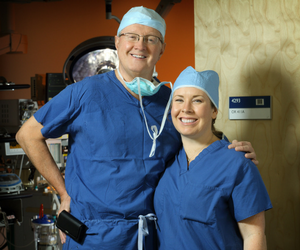Research Grants Funded by your donations
2015 Funded Research Projects:
Identification of Genetic Causes of Human Bladder Exstrophy Birth Defect
Boston Children's Hospital
Boston, MA
The advent of genomic technologies enables a complete sequencing of patients’ genome, which is the key first step toward identification of the exstrophy-epispadias complex disease genes. Boston Children’s Hospital Exstrophy Genetics Initiative began in 2013. This is a joint effort between faculty members at the Department of Urology, the Manton Center for Orphan Disease Research, Newborn Medicine, and the Department of Genetics. At the same time, we have teamed up with pediatric urologists at Children’s Hospital of Philadelphia and Children’s Hospital of Wisconsin to form the Multi-Institutional Bladder Exstrophy Consortium, which has significantly broadened our patient base. To date, we have accumulated a total of 12 patient samples (from both cheek swab and affected region) as well as control samples from unaffected normal parents (cheek swab). We will perform genome-wide sequencing of tissue samples from the affected region. Our overarching goal is to identify canonical disease gene(s) that may be responsible for the birth defect.
2013 Funded Research Projects:
Exstrophy-Epispadius Complex Bladder Smooth Muscle Cells in Culture: Calcium Channels, Growth Factors and Contraction
The Johns Hopkins Hospital
Baltimore, MD
2012 Funded Research Projects:
Characterization of Exstrophy Bladder Smooth Muscle Cells In Culture
The Johns Hopkins Hospital
Baltimore, MD
Eventual continence in bladder exstrophy is determined in part by bladder capacity. At this time, it remains unexplained why some bladders grow better than others. Exstrophy bladder smooth muscle differs from normal bladder smooth muscle at a tissue level and at a molecular level in gene expression. Preliminary studies from Johns Hopkins have suggested that exstrophy bladder smooth muscles cells may have increased levels of transforming growth factor-beta (TGF-beta), which regulates composition of the extracellular matrix, and impacts function and proliferation in multiple cell types. Similarly, preliminary data have shown that alpha-actin, a muscle-specific protein responsible for muscle contraction, may also be expressed at different levels in bladder exstrophy compared to controls. This project will examine the RNA expression of TGF-b through RT-PCR. Additionally, TGF-beta protein concentration and down-stream signaling proteins will be measured quantitatively through Western Blot and Elisa analysis. Other muscle-specific structural and dynamic proteins will be evaluated by Western Blot analysis. This study hopes to further identify why bladder exstrophy cells behave differently compared to controls. Doing so may elevate understanding of the pathogenesis of bladder exstrophy, provide further insight into the prognosis and treatment of the disease, and perhaps will ultimately lead to improvements in tissue engineering.



